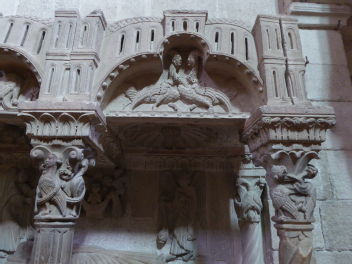The construction of churches or church buildings is obviously as old as the dominance of Christianity in Western societies. The petrification of ecclesiastical wealth, however, implied a more recognisable and enduring presence for this institution throughout the medieval landscape, both urban and rural. The building of churches, and to a lesser extent monasteries, was also promoted by the laity. These were initiatives and investments that were partly religious in origin, in so far as they were ways to ensure the eternal salvation of the founders or of the community involved. The proliferation of masonry-built churches may also raise the question of other objectives of the secular world. Sometimes the laity invested in churches to provide a new, or at least a stronger, more formalised and more recognizable community identity.
Aims and Objectives The aims and objectives therefore constitute four research strands: • Contribution to the analysis of the material evidence both on a macro scale and regionally. Census and systematization through a database of churches in the regions selected through a Geographic Information System (GIS). • Census and chronology of the foundations of family churches, paying particular attention to those endowed by women. • Estimation of construction costs. Evaluation of aspects related to the production and transport of the materials used, the distance from the quarries of origin, the use of new stone and the reuse of old materials. • Testing of the hypotheses concerning the functionality and use of the elements of the churches.
Methodology Fieldwork in Zamora will identify the buildings that will form the focus of the study and these will then be examined archaeologically to determine the materials and the means of construction. Particular attention will focus on the precise recording of masons’ marks and on the compilation of a database of these marks and their locations for each building. These databases will be integrated into the larger database of the whole Petrifying Wealth project.
Outcomes The research will make a substantial contribution to the overall project and will form a discrete section of the database of material relating both to Spain and to the wider context of the project. It will inform further debate on the construction of stone buildings in medieval Europe and the means and methods of construction.
Studentship The PhD studentship will be based at the CSIC in Madrid, and at the University of Warwick and will be supervised by Dr Therese Martin (CSIC) and Dr Jenny Alexander. The student will be based in Madrid, have the status of a pre-doctoral fellow at the CSIC and will be expected to participate in CSIC activities. Although English is widely used at the CSIC, working knowledge of Spanish will be needed. Supervisions, by Skype and in person, will be at Warwick. Applications are welcome from Students from the UK and the EU. The studentship will cover home/EU fees (full time) and a stipend for UK students or EU students of 22,350 euros, rising to 27,000 euros per annum for three years. Candidates ideally should have a First Class Honours degree in History of Art or a related discipline and a distinction-level Masters degree in History of Art or a related discipline. Applications should include a statement of not more than 1,000 words indicating what skills and experience they will bring to the project, a current CV, a transcript of qualifications to date (and anticipated results if you are still studying for your MA), two letters of recommendation plus a writing sample (either a full essay or MA dissertation). The deadline for applications is March 31st 2018 with interviews to be held in April 2018. Applications should be made via the University of Warwick online application form. Please make clear in your online application that you are applying for the Petrifying Wealth studentship. If you wish to discuss the project in more details please email jennifer.alexander@warwick.ac.uk Training and Support Training needs will be assessed immediately after appointment as the level and type of training required will depend on the focus of the research proposal and the skills that the student brings to the discipline. The student will also be able to participate in workshops offered by Warwick’s Centre for Advanced Doctoral Research Excellence (CADRE) and courses in information technology provided by Warwick’s IT services. At the beginning of year 2 and 3 a review of training needs will be undertaken by the supervisors, and the regular supervision meetings will monitor this and identify any additional requirements. Dissemination Plans Link to the Warwick University Page
The research findings will be disseminated via a 80,000 word doctoral thesis, conference papers, and future publications such as articles, to be submitted beyond the completion date of the project. The results will be incorporated in the Petrifying Wealth database as part of a continuing research resource.


